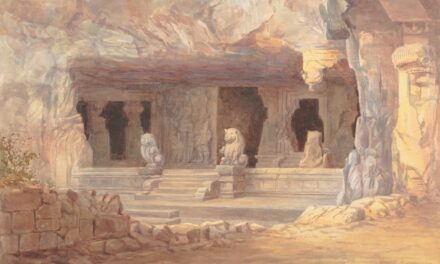The life of an artist often begins with the formative experiences of their early years, and this is certainly true for many renowned figures in the art world. Born in a modest household, the artist in question was exposed to the nuances of creativity from a young age. Growing up in a culturally rich environment, they were surrounded by the vibrant colours and textures of their surroundings, which would later inform their artistic vision.
Their family, though not affluent, placed a high value on education and the arts, encouraging their child to explore various forms of expression. This nurturing environment fostered a deep appreciation for art, leading to early attempts at drawing and painting that would lay the groundwork for a future career. As a young adult, the artist pursued formal education in the arts, enrolling in a prestigious academy known for its rigorous curriculum and esteemed faculty.
Here, they honed their skills under the guidance of accomplished mentors who recognised their potential. The curriculum was demanding, encompassing a wide range of techniques and styles, from classical to contemporary. This exposure not only refined their technical abilities but also instilled a sense of discipline and dedication that would serve them well throughout their career.
The artist’s time at the academy was marked by experimentation and exploration, as they sought to develop a unique voice that would distinguish them from their peers.
Summary
- Early Life and Education: Turner was born in Covent Garden, London, in 1775 and showed an early talent for drawing and painting.
- Influence of Rembrandt: Turner was greatly influenced by the work of Rembrandt, particularly in his use of light and shadow.
- Style and Techniques: Turner’s style evolved over his career, from detailed landscapes to more atmospheric and expressive works, using techniques such as watercolour and oil painting.
- Subject Matter: Turner’s work often focused on landscapes and seascapes, capturing the power and beauty of nature.
- Rise to Prominence: Turner gained recognition and success during his lifetime, becoming a member of the Royal Academy and receiving numerous commissions.
Influence of Rembrandt
One cannot discuss the evolution of this artist’s style without acknowledging the profound influence of Rembrandt van Rijn. The Dutch master, known for his masterful use of light and shadow, left an indelible mark on the art world, and his techniques resonated deeply with this emerging artist. The interplay of chiaroscuro in Rembrandt’s works captivated them, inspiring a desire to explore similar contrasts in their own paintings.
This fascination with light not only enhanced their understanding of form but also allowed them to convey emotion and depth in ways that were previously unimagined. Moreover, Rembrandt’s ability to capture the human condition through portraiture served as a guiding principle for this artist. They studied his portraits meticulously, analysing how he portrayed character and emotion through subtle gestures and expressions.
This study led to a commitment to portraying authenticity in their subjects, striving to evoke genuine feelings in viewers. The influence of Rembrandt extended beyond technique; it shaped the artist’s philosophical approach to art, encouraging them to delve into the complexities of human experience and to reflect these themes in their own work.
Style and Techniques
The artist’s style is characterised by a distinctive blend of realism and impressionism, creating a unique visual language that captivates audiences. Their brushwork is often described as both fluid and deliberate, allowing for an organic quality that breathes life into each piece. The use of colour is particularly noteworthy; they employ a rich palette that ranges from muted earth tones to vibrant hues, creating a dynamic interplay that draws viewers into the scene.
This versatility in colour application not only enhances the emotional resonance of their work but also reflects the artist’s keen observation of the world around them. In terms of technique, the artist is known for their innovative approach to layering paint. They often begin with an underpainting that establishes the composition and tonal values before building up layers of colour and texture.
This method allows for a depth that is both visually striking and emotionally engaging.
This willingness to push boundaries has not only set them apart from contemporaries but has also contributed to the evolution of modern painting techniques.
Subject Matter
The subject matter of this artist’s work is as diverse as it is profound. They have explored a wide range of themes, from intimate portraits to expansive landscapes, each piece reflecting a deep engagement with the world around them.
This focus on interpersonal dynamics invites viewers to reflect on their own experiences and emotions, fostering a sense of empathy and understanding. In addition to human subjects, the artist has also shown a keen interest in nature and its myriad forms. Their landscapes are often imbued with a sense of serenity and contemplation, inviting viewers to pause and appreciate the beauty of the natural world.
The interplay between light and shadow in these works echoes the artist’s fascination with Rembrandt’s techniques, creating an atmosphere that is both tranquil and evocative. By juxtaposing human figures against these serene backdrops, they create a dialogue between humanity and nature, prompting reflections on our place within the larger tapestry of existence.
Rise to Prominence
The journey to prominence for this artist was marked by both perseverance and serendipity. Early exhibitions showcased their talent, drawing attention from critics and collectors alike. Their unique style resonated with audiences who were eager for fresh perspectives in an ever-evolving art scene.
As word spread about their innovative approach and emotional depth, opportunities began to arise. Group exhibitions led to solo shows, each one further solidifying their reputation as a significant voice in contemporary art. As their visibility increased, so did their engagement with the broader art community.
They participated in various art fairs and festivals, where they networked with fellow artists and curators. This exposure not only expanded their audience but also provided invaluable insights into emerging trends within the art world. The artist’s ability to adapt while remaining true to their vision played a crucial role in their ascent; they embraced new ideas while maintaining the core principles that defined their work.
Patronage and Commissions
With rising prominence came an influx of patronage and commissions from private collectors and institutions alike. This support allowed the artist to explore ambitious projects that might have otherwise remained unrealised. Commissions often provided opportunities for experimentation; they could delve into new themes or techniques while still meeting the expectations of discerning patrons.
This balance between personal exploration and professional obligation became a hallmark of their career. Notably, some commissions involved collaborations with architects or designers, resulting in site-specific works that integrated seamlessly into their environments. These projects not only showcased the artist’s versatility but also highlighted their ability to engage with space in innovative ways.
The resulting works often transcended traditional boundaries between art and architecture, inviting viewers to experience art within a broader context. Such collaborations further solidified the artist’s reputation as a forward-thinking creator who was unafraid to challenge conventions.
Impact on the Art World
The impact of this artist on the contemporary art world cannot be overstated. Their innovative techniques and thematic explorations have inspired countless emerging artists seeking to carve out their own paths. By pushing boundaries and challenging traditional notions of representation, they have contributed to a broader dialogue about what art can be in today’s society.
Their work encourages others to embrace experimentation and authenticity, fostering an environment where creativity can flourish. Moreover, this artist has been instrumental in advocating for greater inclusivity within the art community. They have used their platform to champion underrepresented voices, promoting diversity in artistic expression.
Through mentorship programmes and community initiatives, they have sought to empower aspiring artists from various backgrounds, ensuring that future generations have access to opportunities that may have been denied to them. This commitment to social responsibility has further solidified their legacy as not just an artist but also a catalyst for change within the art world.
Legacy and Influence
As this artist continues to create and innovate, their legacy is already taking shape within the annals of art history. Their contributions have paved the way for new generations of artists who draw inspiration from their work while forging their own identities. The themes they explored—human connection, nature’s beauty, and emotional depth—remain relevant today, resonating with audiences across cultures and generations.
In addition to influencing individual artists, this figure has also left an indelible mark on art institutions and educational programmes. Their commitment to fostering creativity has led to initiatives aimed at integrating contemporary practices into academic curricula, ensuring that future artists are equipped with both technical skills and critical thinking abilities. As institutions continue to evolve in response to societal changes, this artist’s influence will undoubtedly be felt for years to come.
Notable Works
Among the many works produced by this artist, several stand out as particularly significant milestones in their career. One such piece is a large-scale portrait that captures the essence of its subject with remarkable clarity and emotional depth. The interplay of light and shadow creates an almost sculptural quality, inviting viewers to engage with the subject on a personal level.
This work exemplifies the artist’s mastery of technique while also reflecting their commitment to authenticity. Another notable piece is an expansive landscape that showcases the artist’s ability to evoke emotion through colour and composition. The vibrant hues capture the essence of a fleeting moment in nature—a sunset or dawn—imbuing it with a sense of transience that resonates deeply with viewers.
This work not only highlights the artist’s technical prowess but also serves as a reminder of nature’s beauty and fragility.
Personal Life and Relationships
Behind every great artist lies a complex personal life that often informs their work in profound ways. This artist has navigated relationships with family, friends, and fellow creatives throughout their journey, each connection shaping their perspective on life and art. Their personal experiences—joys, struggles, triumphs—have all found expression in their creations, adding layers of meaning that resonate with audiences.
The artist has also cultivated meaningful relationships within the art community, forming bonds with fellow artists who share similar values and aspirations. These connections have fostered collaboration and dialogue, enriching both their personal life and artistic practice. By engaging with others who challenge and inspire them, they have created an environment conducive to growth—both as an individual and as an artist.
Recognition and Honors
As recognition for this artist’s contributions continues to grow, so too do the accolades bestowed upon them by various institutions and organisations. Awards celebrating artistic excellence have highlighted their innovative approach while affirming their status as a leading figure in contemporary art. These honours not only serve as validation for years of hard work but also inspire others within the community to pursue their passions relentlessly.
In addition to awards, exhibitions at prestigious galleries have further solidified this artist’s place within art history. Solo shows at renowned institutions have provided platforms for showcasing their most significant works while engaging with diverse audiences worldwide. Each exhibition serves as an opportunity for reflection—both for the artist themselves and for those who encounter their creations—ensuring that their impact will be felt long after they leave the canvas behind.
In conclusion, this artist’s journey through life has been marked by creativity, exploration, and an unwavering commitment to authenticity. From early influences like Rembrandt to contemporary themes that resonate today, they have carved out a unique space within the art world that continues to inspire others. Their legacy is one of innovation, inclusivity, and emotional depth—a testament to the power of art as a means of connection across time and space.
For more insights into the world of art, you may also be interested in reading about the power of triangles in composition. This article explores how artists can use this geometric shape to create visually striking and balanced artworks. To learn more about this fascinating topic, check out The Power of Triangles in Composition.



